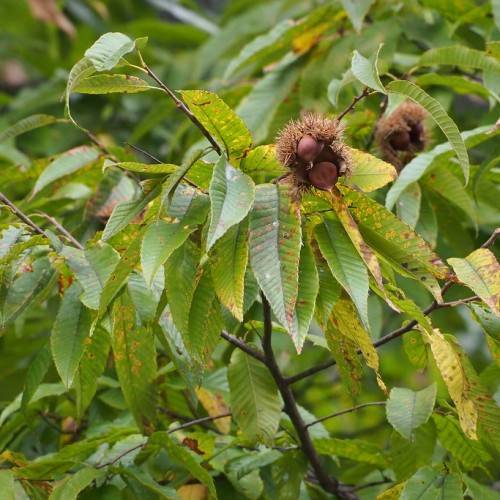
Japanese chestnut
Castanea crenata
Cycle:
Perennial
Watering:
Average
Hardiness Zone:
4 - 8
Flowers:
Flowers
Sun:
Full sun
Fruits:
Fruits Ready In
Edible:
Yes
Leaf:
Yes
Growth Rate:
Low
Maintenance:
High
Drought Tolerant:
Yes
Thorny:
Yes
Invasive:
Yes
Care Level:
Medium
watering
Japanese chestnut (Castanea crenata) prefers moist, well-draining soils and requires approximately 1-2 inches of water per week from either rain or manual irrigation. Water the chestnut slowly and deeply to ensure that it soaks up enough water to reach its roots. Monitor your chestnut’s moisture levels during periods of drought or extreme heat. If the soil feels dry, water the root zone deeply to ensure that your chestnut has access to a consistent supply of water.
sunlight
Japanese chestnut (Castanea crenata) prefers to receive direct sunlight for 3 to 4 hours per day. Ideally, the plant should be placed in a spot that receives morning sun and then shade or dappled sunlight during the afternoon hours. Too much direct sunlight in the afternoon can cause the leaves of the Japanese chestnut to burn.
pruning
Japanese chestnut (Castanea crenata) is best pruned during the late winter, ideally in late February to early March. Pruning should involve removing all dead, diseased, or damaged branches. Branches that are growing in an undesirable direction should also be removed. Light pruning can also be done in late summer, focusing on any straggly and crossed branches or shoots. Heavy pruning should be avoided as Japanese chestnut is a slow-growing tree. Limit pruning to removal of dead, diseased, and damaged wood and light shaping.
